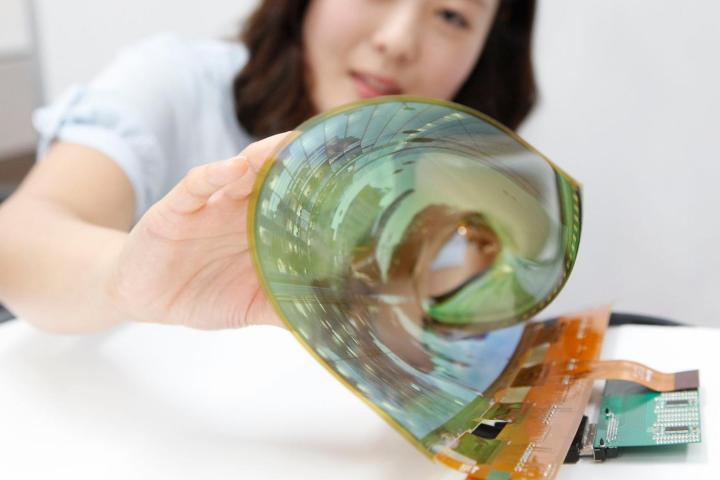
The details surrounding most of these devices are still under wraps, but we’ve gotten the first look at the patents for two of LG’s foldable devices. The first design shows a device made out of two bodies which share a single large display. When the phone is open, you’ll get a tablet-sized display. When it is closed, you will have access to a smaller device similar to a traditional smartphone. The front of the devices houses a screen which can provide additional information such as notifications.
The second design is similar to the first, but features a sliding back panel which can be moved to reveal a portion of the main display used for notifications, messages, and other features.
Of course, the company is no stranger to the flexible display — we’ve seen plenty of flexible prototypes from the company over the past few years, and while certainly not ready for consumer devices, they have been getting better. Now, however, it seems as though the company is ready to take things to the next level.
In fact, the firm has reportedly started outfitting one of its factories with the tools needed to mass produce flexible displays, and has completed much of the research required to mass produce a flexible-display device. LG has also signed contracts with Ignis Innovation, a Canadian company that builds flexible circuits.
Ignis’ tech addresses a number of problems often associated with foldable displays. The technology uses both hardware and software charged with constantly monitoring the pixels, ensuring that they’re rendering the right images, no matter what position the flexible circuits are in. The company has filed hundreds of patents for its related tech, and is apparently the only firm to have come up with a solution — which would make sense considering how eager LG seems to be to work with the company. Even more interesting is the fact that Ignis’ contract is non-exclusive, meaning that if the tech proves itself, it could end up with plenty more customers.
As mentioned, LG isn’t the only one developing foldable devices. Samsung is also reported to be working on a foldable phone, to be released sometime in the future. It looks liked 2018 will be a very interesting one for new technology.
Update: Added information about LG’s patents for foldable phones.



